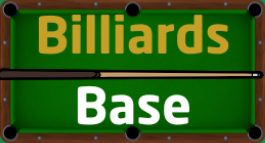Proper racking is the foundation of every quality pool game, yet it’s often overlooked by casual players.
A correctly racked set of balls ensures fair breaks, consistent gameplay, and adherence to official tournament standards. Whether you’re setting up for 8-ball or 9-ball, knowing the exact placement rules and techniques can dramatically improve your game experience.
Understanding the Pool Table and Ball Set
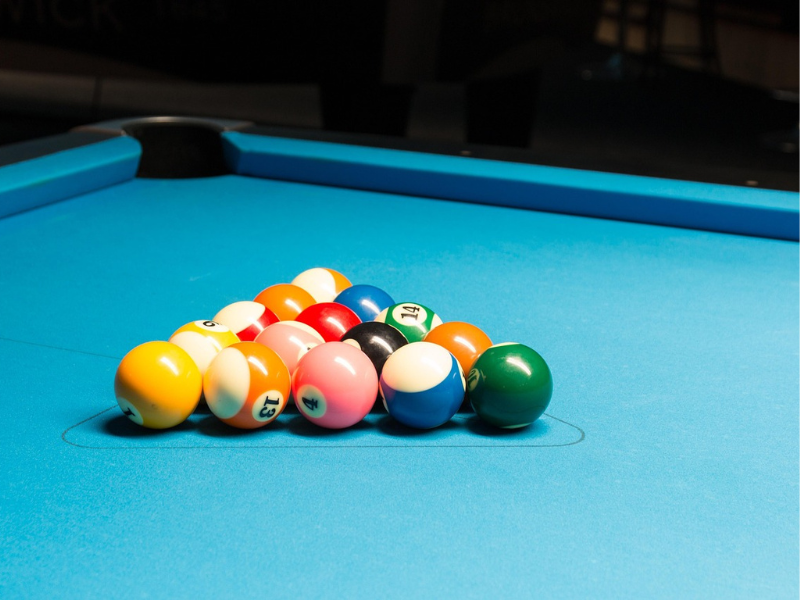
Before diving into specific racking techniques, it’s essential to understand your equipment. American pool uses a standard set of 16 balls: one white cue ball and 15 numbered object balls (1-15). Balls 1-7 are solid colors, balls 9-15 are striped, and the 8-ball is black.
The key reference point for racking is the foot spot, a marked position on the table located at the intersection of the foot string (an imaginary line across the table’s width) and the long string (the table’s centerline). This spot sits exactly one diamond’s distance from the foot rail.
Key differences between 8-ball and 9-ball setups:
- 8-ball: Uses all 15 object balls in a triangular formation
- 9-ball: Uses only balls 1-9 in a diamond formation
- Rack shapes: Triangle for 8-ball, diamond for 9-ball (though triangles can be adapted)
How to Rack for 8-Ball Pool
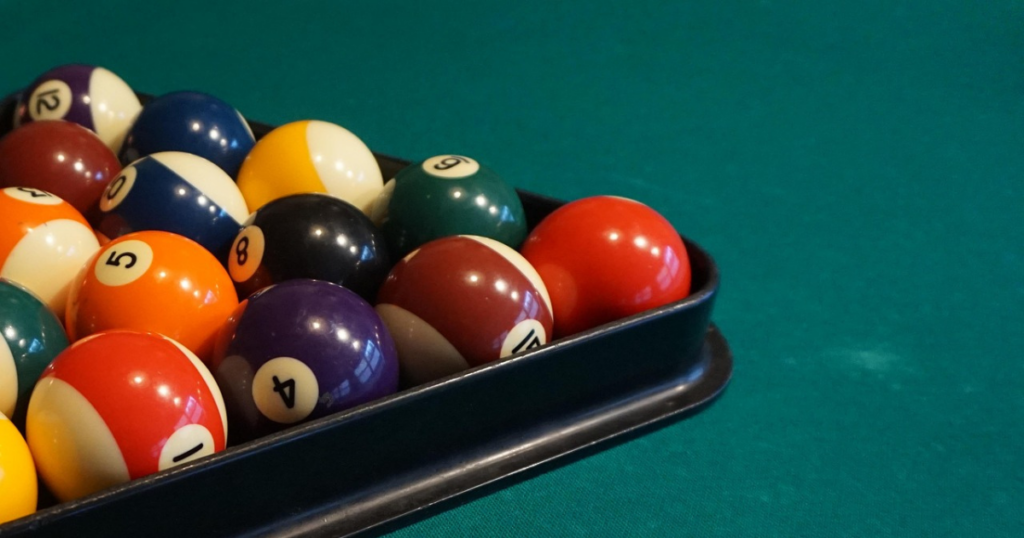
Equipment You Need
- Triangle rack (standard plastic or wooden triangle)
- All 15 object balls (numbered 1-15)
- Clean table surface
Step-by-Step 8-Ball Racking Instructions
1. Position the Triangle Rack Place your triangle rack on the table with the apex (front point) positioned directly over the foot spot. The base of the triangle should be parallel to the foot rail.
2. Place the Apex Ball Position any ball at the front point of the triangle, directly on the foot spot. While any ball can go here, many players prefer using the 1-ball for consistency.
3. Position the 8-Ball The 8-ball must be placed in the center of the third row (the middle position of the rack). This is perhaps the most critical rule in 8-ball racking, according to World Pool-Billiard Association (WPA) rules, incorrect 8-ball placement results in a re-rack.
4. Place Corner Balls In the two rear corners of the triangle:
- One corner must contain a solid ball (1-7)
- The other corner must contain a striped ball (9-15)
- It doesn’t matter which specific solid or stripe you use
5. Fill Remaining Positions Place the remaining balls randomly in the open positions. There’s no specific pattern required for these balls, but ensure you maintain the solid/stripe corner rule.
6. Tighten the Rack Before removing the triangle:
- Push all balls forward toward the apex
- Press down gently to eliminate gaps
- Ensure all balls are touching their neighbors
- Remove the triangle carefully to avoid disturbing the formation
How to Rack for 9-Ball Pool
Equipment You Need
- Diamond rack (preferred) or adapted triangle rack
- Balls 1-9 only
- Clean table surface
Step-by-Step 9-Ball Racking Instructions
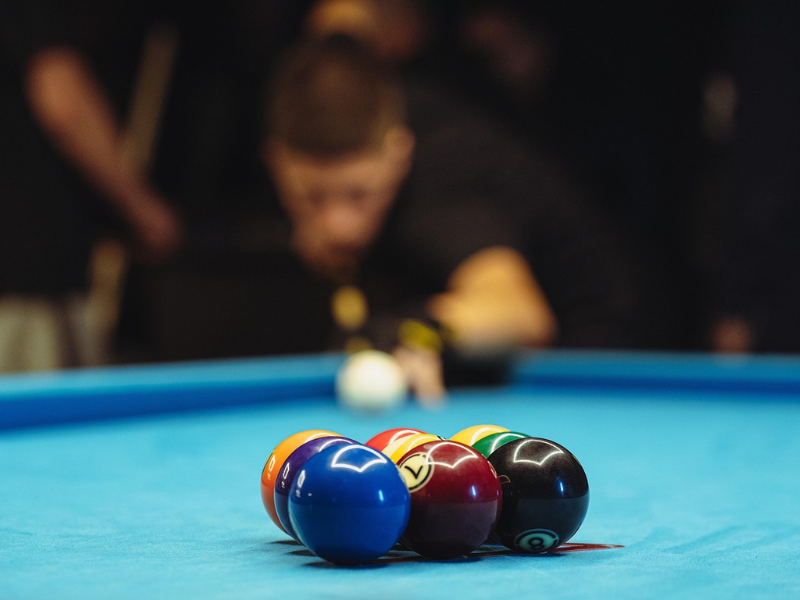
1. Position the Diamond Rack Place your diamond rack with the front point on the foot spot. The diamond should extend five balls deep toward the head of the table.
2. Place the 1-Ball The 1-ball must be at the apex (front point) of the diamond, positioned directly on the foot spot. This is mandatory according to WPA 9-ball rules.
3. Position the 9-Ball The 9-ball goes in the center of the diamond formation (the middle ball of the third row). Like the 8-ball in 8-ball pool, incorrect 9-ball placement requires a re-rack.
4. Fill Remaining Positions Place balls 2-8 randomly in the remaining six positions. Unlike 8-ball, there are no specific placement requirements for these balls.
5. Tighten the Diamond Follow the same tightening process as 8-ball:
- Push balls toward the apex
- Ensure all balls are touching
- Remove the rack without disturbing the formation
Common Racking Mistakes (And How to Avoid Them)
Critical Ball Misplacement
- 8-ball not in center: Results in immediate re-rack in tournament play
- 9-ball not in center or 1-ball not at apex: Violates official rules
- Incorrect corner balls in 8-ball: Failing to place one solid and one stripe in rear corners
Poor Rack Positioning
- Apex not on foot spot: Creates unfair break advantages
- Triangle not square to table: Leads to uneven ball distribution
Loose Racking
- Gaps between balls: Causes unpredictable breaks and poor ball spread
- Removing rack too quickly: Can shift ball positions
- Using damaged racks: Warped or broken racks prevent tight formations
How to Avoid These Mistakes
- Double-check ball positions before removing the rack
- Use the “roll test”: Properly racked balls should stay in formation when the rack is gently lifted
- Invest in quality equipment: A good rack pays for itself in consistent gameplay
- Practice your technique: Develop a consistent racking routine
Tips for the Perfect Rack Every Time
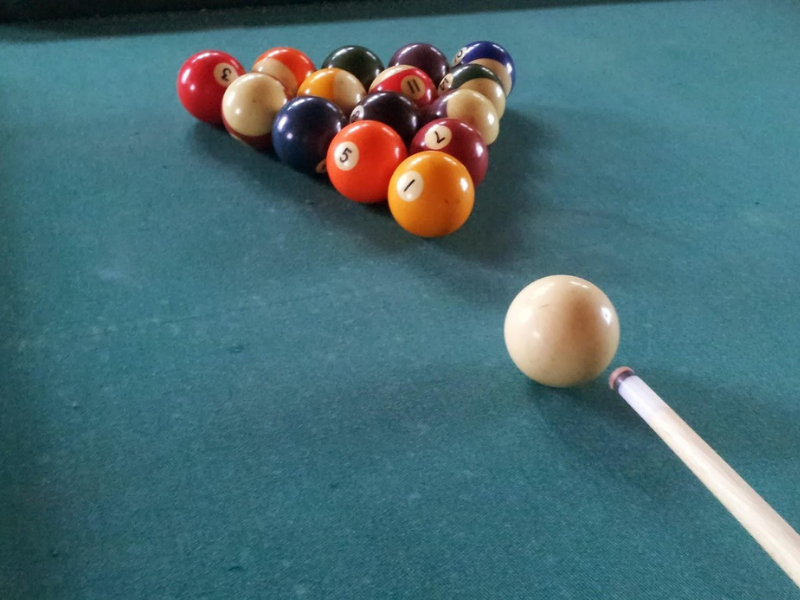
Equipment Maintenance
- Inspect your rack regularly for cracks or warping
- Clean your rack to prevent chalk buildup that can affect ball positioning
- Consider template racks for ultimate consistency (used in professional tournaments)
Technique Refinements
- Use the “forward and down” method: Push balls toward the apex, then press down gently
- Maintain consistent pressure: Too much force can damage balls; too little leaves gaps
- Develop a routine: Same sequence every time builds muscle memory
Table Preparation
- Brush the table before racking to remove chalk and debris
- Check the foot spot is clearly visible and unmarked
- Ensure proper lighting to see ball positions clearly
Professional Standards
Tournament players often use template racks, precision-cut devices that ensure perfect ball spacing. While not necessary for casual play, they demonstrate the importance of consistency in competitive pool.
According to the WPA, tournament officials may re-rack balls multiple times to achieve perfect positioning, emphasizing how crucial proper racking is to fair play.
Frequently Asked Questions (FAQs)
Can you use the same rack for 8-ball and 9-ball?
Yes, you can adapt a triangle rack for 9-ball by using only the front portion to create a diamond shape. However, a dedicated diamond rack provides better results for 9-ball games.
Why is tight racking important?
Tight racks ensure predictable breaks and fair gameplay. Loose racks can cause balls to move unpredictably during the break, potentially creating advantages or disadvantages for either player.
What happens if the rack is loose or balls shift?
In casual play, you can re-rack if both players agree. In tournament play, loose racks typically result in a mandatory re-rack before the break shot.
Is there a difference in racking for tournaments vs. casual play?
Tournament play requires strict adherence to ball placement rules and often uses template racks for consistency. Casual play allows more flexibility, but following official rules improves the game quality.
What is a template rack, and should you use one at home?
Template racks are precision devices that hold balls in exact positions, eliminating gaps completely. While not necessary for casual play, they’re worth considering if you frequently host serious games or want to practice with tournament-standard racks.
Do I need to alternate ball types in 8-ball racking?
No, only the corner balls have specific requirements (one solid, one stripe). The remaining balls can be placed randomly, though some players prefer alternating patterns for aesthetic reasons.
Racking Balls Perfectly
Mastering proper racking technique is an essential skill that enhances every aspect of your pool game. Whether you’re playing casual 8-ball with friends or competing in 9-ball tournaments, consistent, rules-compliant racking creates fair, enjoyable gameplay for everyone.
Remember these key points:
- 8-ball: Triangle formation, 8-ball in center, one solid and one stripe in rear corners
- 9-ball: Diamond formation, 1-ball at apex, 9-ball in center
- Always tighten your rack by pressing balls forward and down before removing the triangle or diamond
- Practice consistency to develop reliable racking habits
Ready to improve other aspects of your game? Explore our guides on advanced American pool techniques and American pool rules for beginners to build a complete foundation for competitive play.
